I've talked about a couple of the plants I won in the NASC auction –
the pygmies and
the Utricularia calcyfida – but there are several sundews that for one reason or another I haven't gotten around to discussing. In part I was letting them acclimate to my conditions (and making sure none croaked), and in part I was just too lazy.
First up, here's
Drosera prolifera.
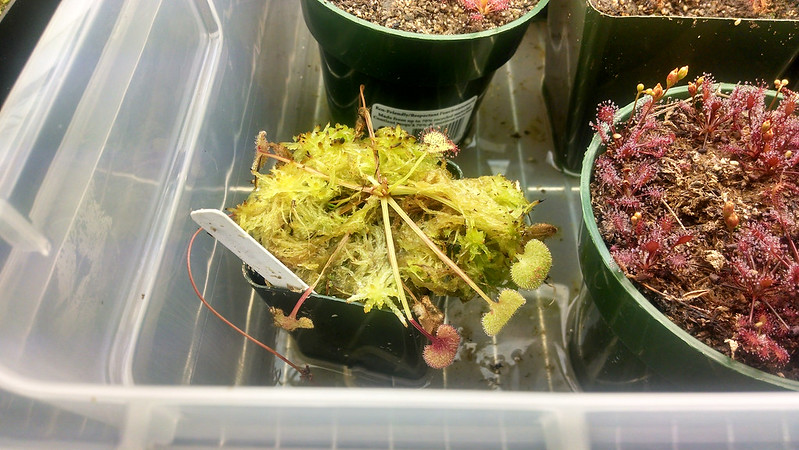 |
| D. prolifera still looking a bit floppy. |
This was the last plant to arrive, and is still a bit straggly. It's put out one new leaf since being in my care, and I'm not too worried about it in the long term, though I do need to pot it up into something a little larger. It arrived with a couple of droopy flower stalks though, and – true to its name – has started a plantlet in the tray water on one of them.
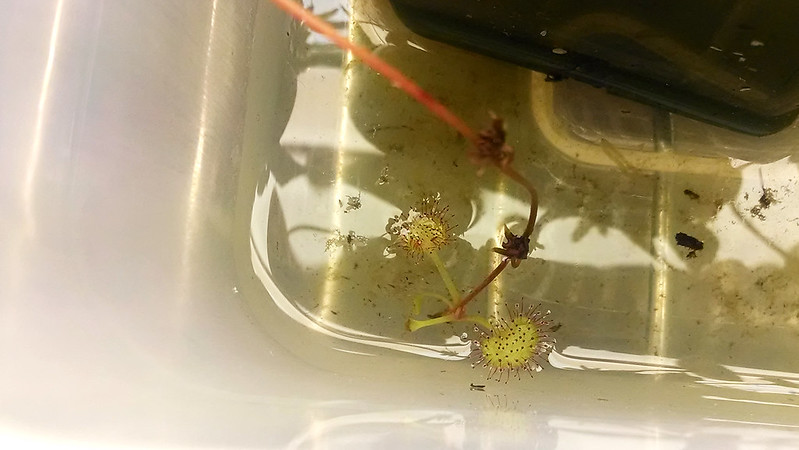 |
| A wee little plantlet. |
This bodes well for the future at least.
One of the more uncommon plants I got is
Drosera hamiltonii. It's an Australian sundew which is sometimes a companion plant to
Cephalotus follicularis. I ended up with plants with 2 different sets of location data ("Esperence, SW Australia", and "Western Australia"). The grower who put them up for bid wasn't 100% sure, but suspected they might be different clones, which would be important, since
D. hamiltonii doesn't self-fertilize.
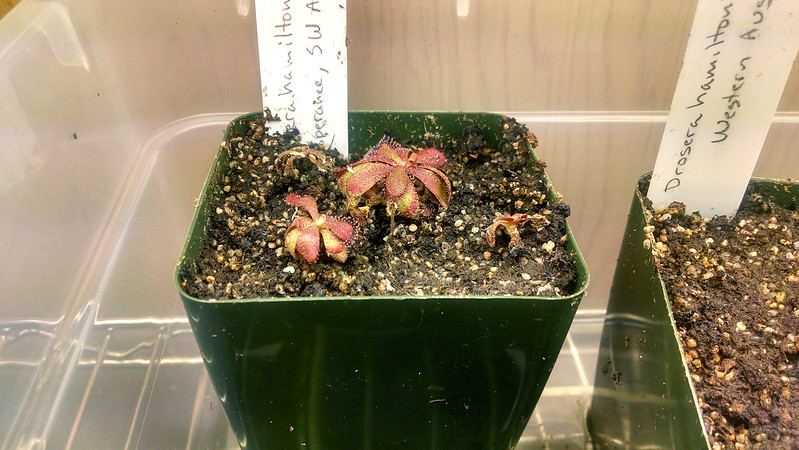 |
| Drosera hamiltonii slowly getting comfortable. |
These guys have been the most reluctant to settle into my conditions. I'm not sure what exactly they want, but there's some dew production so maybe they're just a bit slower growing than the others. We'll find out going forward.
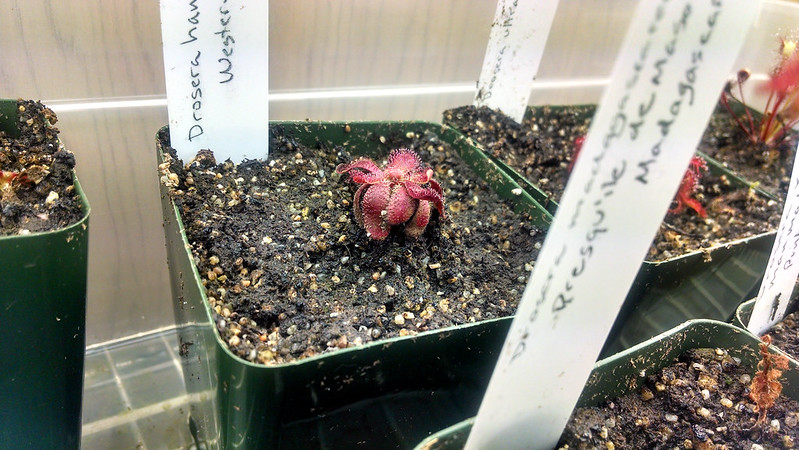 |
| Hopefully a different clone! |
These are very attractive when grown well, so I hope they settle in and start to grow. I may try transplanting a seedling or two into LFS to see if they like that better, but that'll be later on.
I also got a couple of hybrids in the deal. This is
Drosera ultramafica x
spatulata.
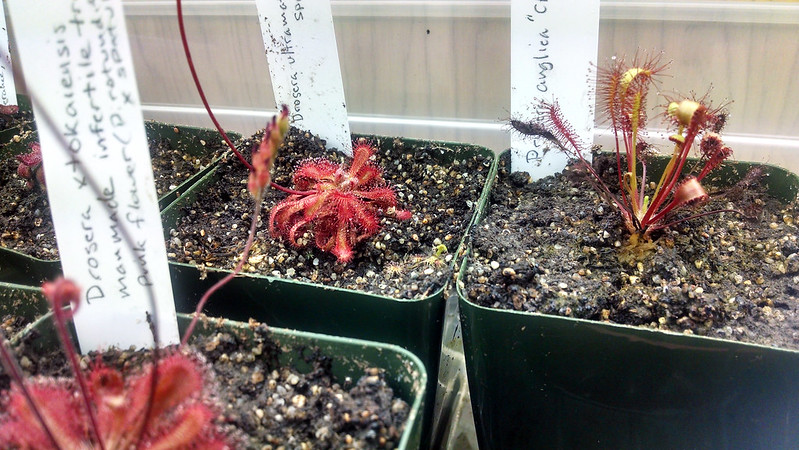 |
| The brilliant red of this hybrid really sold it for me. |
It's got some amazing colors, I'm just waiting for it to get some new growth and really fill out. The
Drosera x
tokaiensis though...
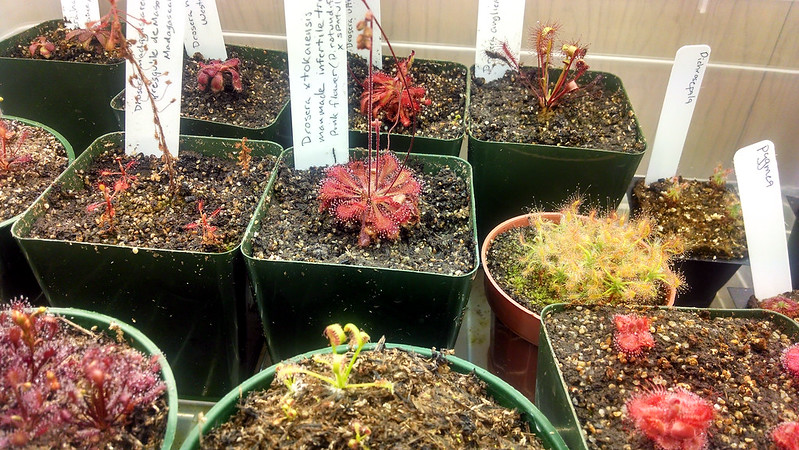 |
| This plant has been flowering non-stop. Luckily the flowers are sterile. |
This is a man-made
D. tokaiensis hybrid, which means it's sterile, unlike the naturally occurring
D. spatulata x
rotundifolia hybrid (more information
here). It's also vigorous as hell – it looks like it's been here for months, rather than weeks.
One of the most exciting plants I won is
Drosera anglica CA x HI. This plant is a result of careful breeding between the small, tropical, Hawai'ian form of
D. anglica with a larger temperate form from California. The result is a large, vigorous, beautiful plant with no dormancy requirement.
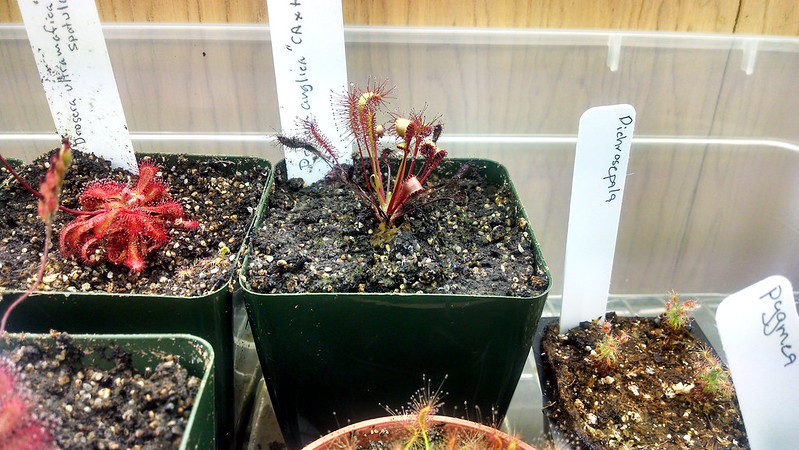 |
| The elegant D. anglica CA x HI was the early favorite among my housemates. |
It's not looking its best, since it was fed 2 days before this picture, but when all the leaves are fresh it's very striking. Long, upright petioles and delicate oval laminae – what's not to love.
Finally, I got a plant I'd been looking for for months –
Drosera madagascarensis.
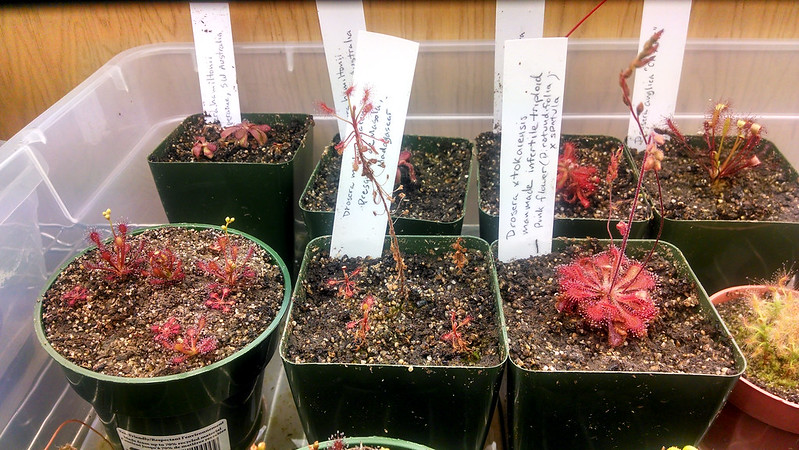 |
| I just love how fragile the stalks end up looking. So delicate. |
This whimsical, stem-forming South African sundew had been on my radar for some time, and I was super pleased to win one, especially one with location data (Presqu'ile de Masoala, Madagascar). I lost one of the seedlings, but I've still got 4 plants doing great.
The NASC auction was a major event for me – I fleshed out my collection, and my money went to help preserve carnivorous plant habitat and genetic diversity. I intend to donate a lot more plants next year.
It's really fun to grow carnivorous plants :)








I have a post which might help with your D. hamiltonii - http://ngcarnivorousplants.blogspot.com/2014/02/drosera-hamiltonii-growing-guide.html. I've been growing it for some time now, in the same pot as my Ceph, and it seems to like those conditions. (In other words, a perlite heavy mix with some sphagnum peat and a top dressing of live sphagnum. The pot sits on a shelf in my living room and has a very small tray under it and I top water a short while after the tray gets dry. I've noticed, as Barry Rice mentioned about the species, that occasionally it will loose all its "dew". However, I have two small plants and this has only happened with one. I think it was due to a seasonal change in environmental conditions. Now that conditions have stabilized, both seem to be doing well. The plants also seem to enjoy high light conditions). Hope that helps! -N
ReplyDeleteThanks for the heads-up Natch. I think my media might be a bit too dense for it then – I'll give it a few more weeks, and then see about repotting in a higher perlite mix.
Delete